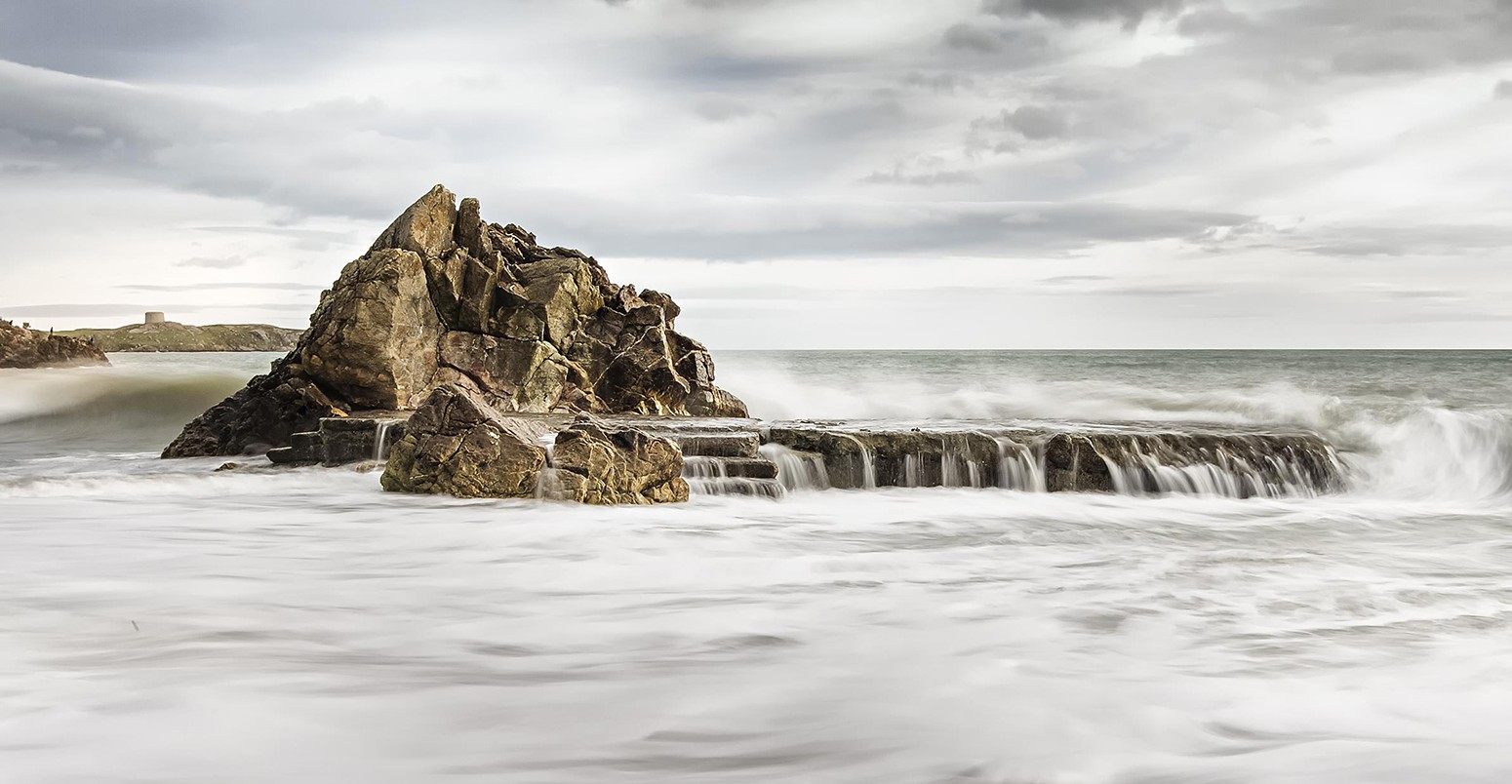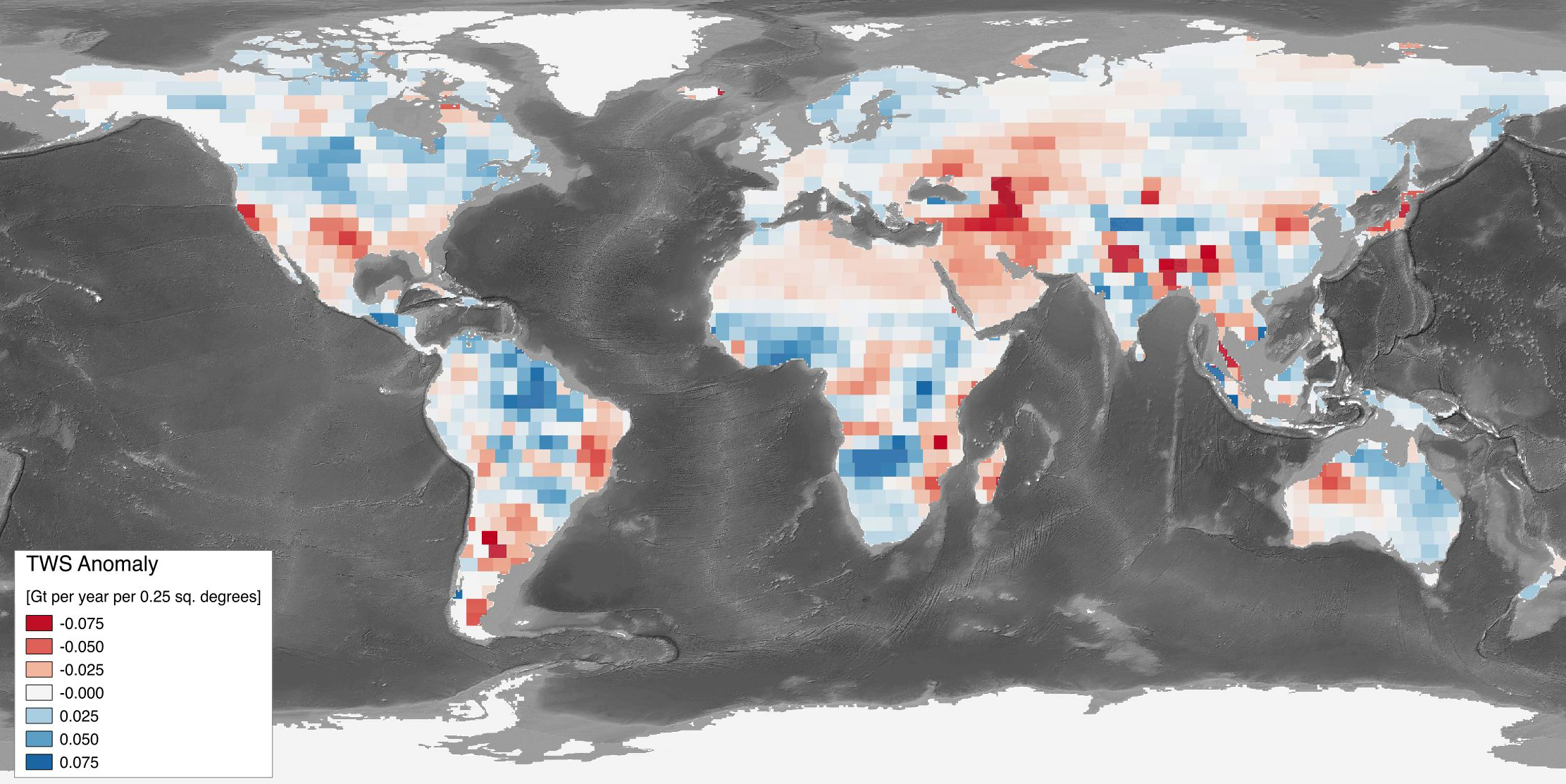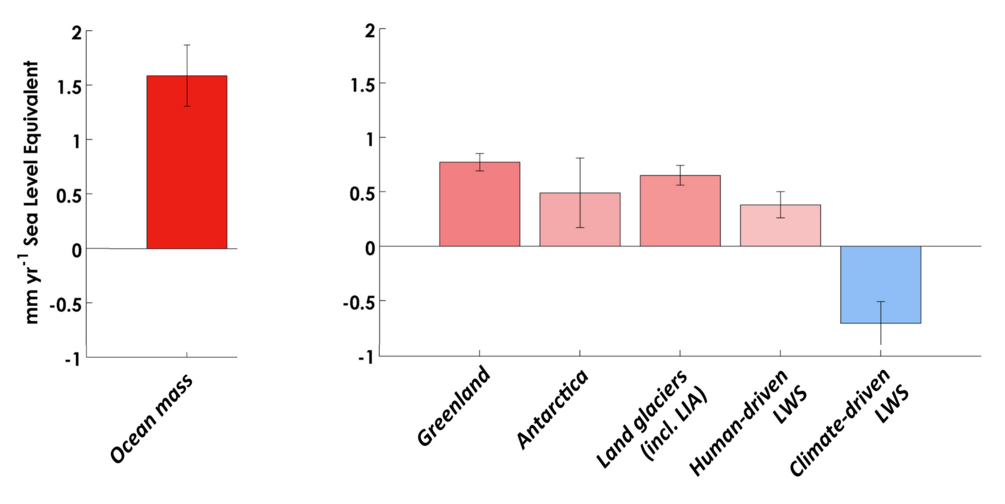
Water stored on land stopped recent sea level rise being up to 22% higher
Robert McSweeney
02.11.16Robert McSweeney
11.02.2016 | 7:00pmSea levels are rising more than twice as quickly as they did for most of the 20th century. Scientists put this increase down to greater melting of glaciers and ice sheets and the oceans continuing to expand as they warm.
A new study, published in Science, says that this acceleration would have been even greater had it not been for an increase in the amount of water being stored on land.
Land water storage
Every year, around 6tn tonnes of water cycles through Earth’s land surface. When rain falls on land it gets held up in the soil, wetlands, groundwater, lakes and reservoirs on its journey back to the oceans. This is collectively referred to as “land water storage”.
Humans speed up this cycle by extracting groundwater and draining wetlands, as well as slow it down by building and filling reservoirs. Overall, we extract more water from the ground than we collect in reservoirs. This water has ended up in the oceans, adding 0.38mm per year to global sea levels over the past two decades.
But variations in rainfall and evaporation also affect how much water is deposited onto land each year. When rainfall increases, there’s more water to fill up groundwater, lakes and reservoirs, so less makes it back into oceans.
The new study finds that changes in rainfall and evaporation over the past decade have increased the amount of water stored on land. And without this boost to storage, the rate of sea level rise would have been as much as 22% greater, the researchers say.
Satellite data
The researchers used data from a pair of satellites launched in 2002 as part of NASA’s Gravity Recovery and Climate Experiment (GRACE) mission. GRACE collects monthly measurements in the changes in the Earth’s gravity. Lead author Dr John Reager, from NASA’s Jet Propulsion Laboratory (JPL) at the California Institute of Technology (Caltech), explains to Carbon Brief:
These changes are often caused by the movement of water – and the measurements are actually quite precise. An important piece of this work was making sure that we could reduce the uncertainty in the measurement enough to be able to draw these conclusions.
Using the data, the researchers tracked the amount of water stored on land between April 2002 and November 2014. You can see the changes they recorded in the map below. The red shading indicates water losses from land, while the blue shading show water gains.

Trend in land water storage between April 2002 and November 2014 across the world. Shading indicates an increase (blue) or decrease (red) in storage. Source: Reager et al. (2016).
The trends shown in the map encompass both the impact of humans extracting and collecting water – such as groundwater depletion in the Middle East and northwestern India – and variations in rainfall, such as the wetter conditions in the tropics.
The study didn’t investigate the causes behind the changes in rainfall patterns, says Reager, but it’s likely there’s more than one influence in play:
Things like El Niño and La Niña can cause more rain to fall over the continents. But an increase in rain in some places is also predicted by models of future anthropogenic climate change. We’re not sure really what mechanism is driving the observed increases in water stored on land, but we suspect it may be a combination of the those factors.
Limiting sea level rise
Overall, the amount of water stored on land increased by 120bn tonnes per year over the 2002-14 period, the study finds. Had this water made it into the oceans, it would have raised sea levels by 0.33mm per year, the researchers say.
But, as mentioned earlier, the changes humans are making to land water storage added 0.38mm a year to sea levels. The difference between these two figures – 0.71mm per year – must, therefore, be how much just the fluctuations in climate are slowing sea level rise, the study concludes.
You can see this in the chart below. The red bar on the left-hand side is the overall change in global sea levels between 2002 and 2014 in millimetres per year. The bars on the right-hand side are the individual components that make up this total – both adding to sea levels (pink) and reducing them (blue). Note, the chart shows changes in ocean mass, so doesn’t include the contribution from the water expanding as it warms.

Observed contributions (right-hand bars) to overall global sea level rise (left-hand bar) between April 2002 and November 2014 in terms of ocean mass. Includes, from right to left, Greenland ice sheet, Antarctic ice sheet, land glaciers (including a correct for the Little Ice Age), and human-driven land water storage (LWS) and climate-driven LWS. Shading indicates a positive (pink) or negative (blue) contribution. Source: Reager et al. (2016).
Sea level budgets
Dr Leonard Konikow, a research hydrologist with the US Geological Survey, says the paper is an “extremely valuable contribution” to understanding the influence of land water storage on sea levels. Konikow, who wasn’t involved in the study, was a contributing author to the sea level rise chapter of the latest report from the Intergovernmental Panel on Climate Change (IPCC). He tells Carbon Brief:
[The study] demonstrates that normal seasonal, annual, and multi-year climatic cycles and variability can substantially affect large-scale water budgets on land, and that this effect must be recognised and accounted for when assessing trends in water storage depletion, as well as the contribution of changes in continental water storage to sea-level changes.
The IPCC report assumes that the effect of variations in rainfall and evaporation on land water storage are too small to include when estimating the different components of sea level rise. The study’s findings show this needs to change, says Reager:
At the very least, these effects need to be accounted for in global sea level budgets.
As more and more data is collected from the GRACE satellites, scientists will get a better idea of whether fluctuations in the climate will continue to increase land water storage. Just a decade or so of data isn’t yet enough to draw conclusions on whether this is a long-term effect, Reager says, or whether it might reverse in future, amplifying sea level rise.
Main image: Killiney beach, Ireland.
Reager, J. T. et al. (2016) A decade of sea level rise slowed by climate-driven hydrology, Science, doi/10.1126/science.aad8386.
-
Water stored on land stopped recent sea level rise being up to 22% higher, new research finds
-
New Science Journal study looks at the impact land water storage has had on rates of sea level rise

